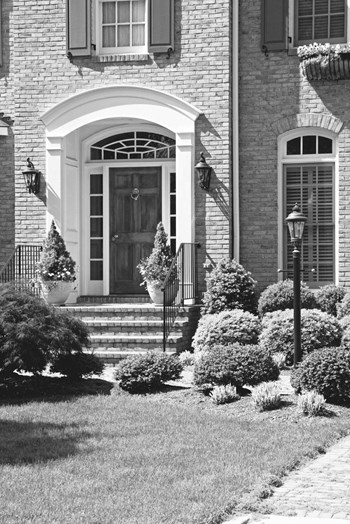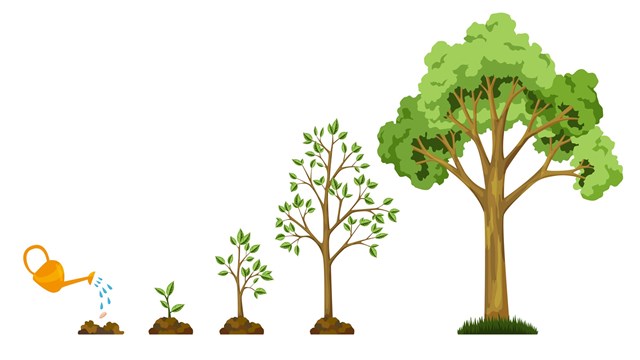
First impressions last—especially when it comes to real estate. Beyond its architecture, construction and natural setting, nothing is as critical to a property’s image from the outside as its landscaping. As a result, owners and managers of buildings and developments can take steps from the start to create a landscape plan with extraordinary impact throughout the seasons.
Regardless of the size or scope of a development, its landscape plan should set the tone with aesthetic and functional components that complement the real estate. Lawns, gardens, flowers, trees, water and hardscape elements also need to be planned for immediate and long-term results. The landscape welcomes visitors, and the same time creates a motivating quality as well as an area of respite for building tenants and their visitors. And for the municipality in which the property is located, the landscaping can contribute to the overall beauty of a neighborhood, becoming a source of pride and even a local landmark.
Considering the Elements
The initial planning for a new landscape installation or an upgrade at a multifamily residential property looks well beyond the short-term “visual” results to ensure that the project— and its associated investment—will continue to achieve its purpose for many years. In an industry where assignments often are awarded to the lowest bidder, it is important to understand that cutting corners can result in much greater costs down the road.
A good landscape design has three main considerations: soil quality, climate and ultimate maintenance requirements. Soil must be properly treated and plants chosen that are appropriate for the natural environment and setting. Trees, shrubs and lawn areas must be consistently maintained. And of course, gardens require proper irrigation to prevent landscaping from quickly becoming messy and unwelcoming, and requiring replacement within a few years—or even months.
Usually, a property requires some degree of modification every five to 12 years. It may be a case of having the wrong plants in the wrong location, which can be resolved by transplanting existing trees, shrubs or annuals. Sometimes just a change in the amount of light through relocation or pruning can improve a plant’s performance.
At older, well-established properties, a new landscaping program often focuses on updating and re-invigorating the landscape. A newly acquired property may need a landscape renovation to reflect the image of the new owners or building occupants. That may mean a more formal look or a more casual “country” look, altered or enhanced color, or the installation of hardscape areas. Creating patio areas and adding fountains, gazebos, picnic tables and benches provide residents with a place to relax and socialize with neighbors.
Working from the Soil Up
Soil quality is the single most important factor in any new or revitalized landscape. Properly prepared soil ensures minimal maintenance and longer plant life. Ideally, soil preparation will coincide with a building’s construction or renovation. Frequently, the landscaper will test the soil before starting a project and adjust it as needed. For example, we use a manure-based product to enhance the soil. Our designers and maintenance departments prefer humates, a dried organic material, with fertilizers added only as needed.
Plant choice and proper maintenance are critical. Low maintenance and drought-resistant plants reduce upkeep and irrigation costs, and organic techniques can minimize the use of expensive chemical treatments while protecting the environment.
As a general design rule, flowering trees and shrubs are used to soften the lines of a property, while flowers create the “wow” factor. Particular attention is paid to entryways, with flagpoles, water elements and defined garden areas complemented by plantings.
Color is key and relies heavily on seasonal flowers and annuals. Eye-catching masses buoy the spirits of residents and passersby. We are finding many clients choose pansies for early color with impatiens, begonias and petunias for an upbeat spring look. Icicle pansies, flowering cabbage and mums are planted in the fall, and container plantings are incorporated for additional color and interest.
For added impact, holiday décor and lights, garlands and custom-made wreaths help brighten up the winter months and accent an association’s entry areas. Indoors, landscaped common areas can bring water and greenery to accent interiors while increasing oxygen levels and making nature part of the environment year-round.
Selecting a Landscape Designer
Hardy shrubs, healthy flowers, a lush lawn and inviting spots to sit distinguish a property and its occupants. The quality of a landscape also reflects the company that designed and maintains it.
In choosing a landscaper who will do the most for a building or association, it is always important to determine the experience and background of the members of the landscape team. Do they have degrees in landscape architecture? Do they belong to professional associations? Are they insured? It helps to interview up to three or four firms.
It is also important to consider a landscape program as a long-term investment rather than a short-term spruce-up. While quality landscape designers may charge a higher fee at the start of a project, they consistently save their clients money in the long-term and provide a design and installation program that will maintain its curb appeal for many years into the future. The results will be rewarding for building occupants, visitors and neighbors and serve as a source of pride and value for property owners.
Mark Borst is president of Borst Landscape and Design in Allendale, New Jersey.






Leave a Comment